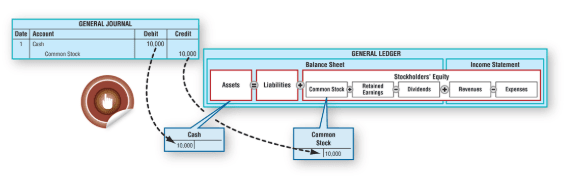
In a broader economic sense, the depreciated https://colourktv.com/how-construction-companies-apply-the-percentage-of/ cost is the aggregate amount of capital that is “used up” in a given period, such as a fiscal year. The depreciated cost can be examined for trends in a company’s capital spending and how aggressive their accounting methods are, seen through how accurately they calculate depreciation. It just needs to prospectively change the estimated amount to book to depreciate each month. Several factors can influence residual value estimation, including the asset’s condition, technological advancements, market demand, and the expected useful life. Recognizing their differences sharpens financial insights and promotes astute asset management. Although interrelated through the thread of depreciation, Scrap Value and Book Value play unique roles.

Methods of Determining Salvage Value

Sometimes, there might be minor defects or worn-out parts that even the best mechanic might miss at first glance. These little issues might not seem like a big deal right now, but they could end up causing problems or even become a safety hazard later on. So, if you’re thinking about buying a salvage title car, be sure to factor these risks into your decision. The residual value salvage value definition of a product when it has reached the end of its productive life but still has a value if salvaged for recycling or reselling its parts.

Tax Implications
- This method results in a larger depreciation amount in the early years and gradually decreases the expense as the asset ages.
- Businesses often conduct market research or consult industry experts to evaluate demand and pricing trends for similar used assets.
- A lower depreciation expense, resulting from a higher salvage value, can reduce cash flow from operations.
- Now, you are ready to record a depreciation journal entry towards the end of the accounting period.
- Subtract the resulting depreciation expense from the asset’s carrying value on the balance sheet, thus updating the book value of the asset.6.
A higher salvage value results in lower annual depreciation expenses, potentially inflating net income. This method requires precise tracking of production metrics to ensure depreciation aligns with the asset’s operational contribution. Businesses must estimate how much an asset will be worth when it reaches the end of its useful life to how to determine salvage value ensure accurate financial reporting.
How is Salvage Value Calculated?
- In Lisa’s case, the insurer used a combination of market analysis and depreciation schedules to calculate the salvage value.
- The useful life assumption estimates the number of years an asset is expected to remain productive and generate revenue.
- There might be a minor nuisance as the scrap value may assume that the good isn’t being sold, but instead, it is just converted to raw materials.
- If you run a business, you will need various machinery like computers, production equipment, workspaces, and more.
- Reduction in tax liability will directly result in higher profit margins and business expansionism.
Tax authorities, like the Internal Revenue Service (IRS) in the United States, impose specific rules regarding depreciation and salvage value. Hence, a car with even a couple of miles driven on it tends to lose a significant percentage of its initial value the moment it becomes a “used” car. Under straight-line depreciation, the asset’s value is reduced in equal increments per year until reaching a residual value of zero by the end of its useful life. The carrying value of the asset is then reduced by depreciation each year during the useful life assumption. The salvage value is considered the resale price of an asset at the end of its useful life. Now, you are ready to record a depreciation journal entry towards the end of the accounting period.

Depreciation Methods Involving Salvage Value
So, the estimated salvage value of the computer after 5 years is $300, which was the same as the initial estimated salvage value. Therefore, the company could expect to sell the computer for $300 after 5 years of use. Salvage value refers to the estimated value of an asset at the end of its useful life, or at the time when it is no longer productive or useful to its owner. It represents the amount that an owner can expect to receive from the sale or disposal of the asset at the end of its useful life.
- The former gives a glimpse into an asset’s future worth, while the latter reflects its present financial standing.
- Residual value is what you expect to get back when you’re ready to sell or dispose of something—whether it’s a piece of equipment, a vehicle, or a building.
- Moving on, let’s look through the details of how the salvage value can be used in depreciation calculations.
- A business that consistently underestimates or overestimates salvage value can give an inaccurate picture of its financial health.
Step 5: Subtract the Residual Value from the Acquisition Cost
Gains or losses may arise depending on the asset’s book value relative to the sale price. When an asset reaches the end of its useful life or becomes economically unviable, businesses must decide whether to sell, scrap, or donate it. The difference between the asset purchase price and the salvage (residual) value is the total Catch Up Bookkeeping depreciable amount.

For tax purposes under MACRS, salvage value is zero, so revisions don’t apply. Under MACRS, residential property depreciates over 27.5 years, and commercial over 39 years. Yes, Kelley Blue Book and NADA Guides are good for estimating vehicle salvage value. Use them to find the trade-in value, which reflects the wholesale market.


